Search results for: 'For'
-
 Ushabti for Ra-mes
Ushabti for Ra-mesThe mummiform funerary figurine dates to the Late Period of ancient Egypt, 26th to 31st dynasty. It is remarkable that it probably originates from the burial of two brothers, Ra-mes and Somtus-tefnacht.
Price: on request Ushabti for Somtus-tefnacht
Ushabti for Somtus-tefnachtThe mummiform funerary figurine dates to the Late Period of ancient Egypt, 26th to 31st dynasty. It is remarkable that it probably originates from the burial of two brothers, Somtus-tefnacht and Somtus-tefnacht.
Price: on request Ptah-Sokar-Osiris statuette for Ta-scherit-Mehjt
Ptah-Sokar-Osiris statuette for Ta-scherit-MehjtLarge wooden statue representing the ancient Egyptian funerary deity Ptah-Sokar-Osiris. Nicely painted figurine including base from the Ptolemaic period of ancient Egypt.
€14,000 Egyptian ushabti for Ra-mes
Egyptian ushabti for Ra-mesThe mummiform funerary figurine dates to the Late Period of ancient Egypt, 26th to 31st dynasty. It is remarkable that it probably originates from the burial of two brothers, Ra-mes and Somtus-tefnacht.
Price: on request Egyptian ushabti for Somtus-tefnacht
Egyptian ushabti for Somtus-tefnachtThe mummiform funerary figurine dates to the Late Period of ancient Egypt, 26th to 31st dynasty. It is remarkable that it probably originates from the burial of two brothers, Somtus-tefnacht and Somtus-tefnacht.
Price: on request Egyptian ushabti for Somtus-tefnacht
Egyptian ushabti for Somtus-tefnachtThe mummiform funerary figurine dates to the Late Period of ancient Egypt, 26th to 31st dynasty. It is remarkable that it probably originates from the burial of two brothers, Somtus-tefnacht and Somtus-tefnacht.
Price: on request Egyptian ushabti for Somtus-tefnacht
Egyptian ushabti for Somtus-tefnachtThe mummiform funerary figurine dates to the Late Period of ancient Egypt, 26th to 31st dynasty. It is remarkable that it probably originates from the burial of two brothers, Somtus-tefnacht and Somtus-tefnacht.
Price: on request Egyptian ushabti for Somtus-tefnacht
Egyptian ushabti for Somtus-tefnachtThe mummiform funerary figurine dates to the Late Period of ancient Egypt, 26th to 31st dynasty. It is remarkable that it probably originates from the burial of two brothers, Somtus-tefnacht and Somtus-tefnacht.
Price: on request Egyptian ushabti for Somtus-tefnacht
Egyptian ushabti for Somtus-tefnachtThe mummiform funerary figurine dates to the Late Period of ancient Egypt, 26th to 31st dynasty. It is remarkable that it probably originates from the burial of two brothers, Somtus-tefnacht and Somtus-tefnacht.
Price: on request Egyptian ushabti for Somtus-tefnacht
Egyptian ushabti for Somtus-tefnachtThe mummiform funerary figurine dates to the Late Period of ancient Egypt, 26th to 31st dynasty. It is remarkable that it probably originates from the burial of two brothers, Somtus-tefnacht and Somtus-tefnacht.
Price: on request Egyptian ushabti for Ra-mes
Egyptian ushabti for Ra-mesThe mummiform funerary figurine dates to the Late Period of ancient Egypt, 26th to 31st dynasty. It is remarkable that it probably originates from the burial of two brothers, Ra-mes and Somtus-tefnacht.
Price: on request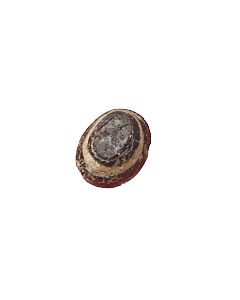 Roman glass insert for a fingerring
Roman glass insert for a fingerringBanded glass imitating natural agate. The piece was once inserted into jewellery from the Roman Imperial period.
Price: on request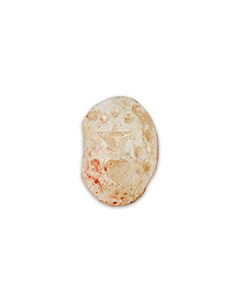 Roman intaglio with mixing vessel for wine
Roman intaglio with mixing vessel for wineThe Roman glass paste shows a tall vase surrounded by vine leaves. It is a mixing vessel for wine.
Price: on request Aureus minted by Claudius for his mother, Antonia
Aureus minted by Claudius for his mother, AntoniaPosthume Prägung, welche die Kaiserin als Constantia mit Stabfackel und Cornucopiae zeigt. Auf dem Avers Portrait der Antonia.
Price: on request Two pairs of Roman bronze soles for safety shoes
Two pairs of Roman bronze soles for safety shoesExremely rare sheets in the shape of a shoe bed. The two belonging pairs were found in the Roman city of Novaesium in Germany.
€1,400 Small glass bottle for perfume - Roman imperial period
Small glass bottle for perfume - Roman imperial periodGlass flask from Roman Imperial times. Excellent condition. Fully intact, cleaned on the outside, patinated on the inside. From a danish family collection.
Price: on request Roman eagle with gazelle or Capricorn - votive for Jupiter Dolichenus
Roman eagle with gazelle or Capricorn - votive for Jupiter DolichenusExcellently preserved incl. surface details. Nice green patina. From the collection of the art historian Steinbock, composed between 1920 and 1982.
Price: on request Extremely rare aureus of Saturninus coined for Probus - 7th known specimen of this coin
Extremely rare aureus of Saturninus coined for Probus - 7th known specimen of this coinDie 7. weltweit bekannte Münze des Saturninus überhaupt und damit eines der seltensten Stücke der römischen Numismatik in exzellenter Erhaltung.
Price: on request Corinthian aryballos in the form of a hare
Corinthian aryballos in the form of a hareBeautiful small vessel for perfumed oil from the heyday of Corinthian pottery production, made around 600 BC.
€1,600 Corinthian aryballos in the form of a ram
Corinthian aryballos in the form of a ramBeautiful small vessel for perfumed oil from the heyday of Corinthian pottery production, at the beginning of the 6th century BC.
€1,820 Core-formed glass juglet
Core-formed glass jugletThe brown glass with a decorative wave pattern imitates the shape of a Greek metal or pottery hydria, but without the handles at the sides. A nice example for the early glass production in Greek to Hellenistic times.
€2,080 Core-formed polychrome glass alabastron
Core-formed polychrome glass alabastronNice and small vessel with a strong patina. It is not a classical type of alabastron and retains a few mysteries.
€755 Antike Münzform für Falschgeld - Fund aus Northamptonshire
Antike Münzform für Falschgeld - Fund aus NorthamptonshireGefunden in Pitchley, UK, am 1. Januar 2008. Der Fund ist mit PAS Nummer dokumentiert und wissenschaftlich untersucht. Von außerordentlicher Seltenheit.
Price: on request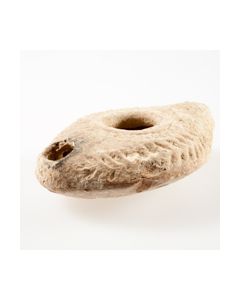 Öllampe in Form einer doppelten Lanzenspitze
Öllampe in Form einer doppelten LanzenspitzeFast runde Öllampe ohne definierte Schnauze und Henkel. Schulter mit Tannenzweigdekor. Exzellent erhalten.
Price: on request Hohe Daunische Vase in Form eines Kalathos mit Ringdekor
Hohe Daunische Vase in Form eines Kalathos mit RingdekorHohe, fein gearbeitete Vase mit einer durch doppelte Einschnürung abgesetzter Standfläche. Musealer Zustand, unbeschädigt. Ungewöhnliches Stück.
Price: on request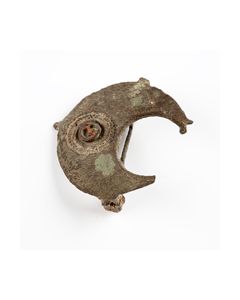 Bronzefibel in Halbmondform, kunstvoll
Bronzefibel in Halbmondform, kunstvollVollständig erhalten mit Nadel. Stein aus Fassung fehlt. Etwa 3. Jh. n. Chr. bis 10. Jh. n. Chr.
Price: on request Griechisches Miniaturgefäß in Form einer Lagynos
Griechisches Miniaturgefäß in Form einer LagynosUngewöhnliche Form. Vermutlich für kostbare Öle oder im sepulkralen Kontext verwendet.
Price: on request Abdruckform zur Fertigung von Öllampen - Unterseite - selten
Abdruckform zur Fertigung von Öllampen - Unterseite - seltenZur Fertigung frühchristlicher nordafrikanischer Öllampen aus rotem Ton. Museumswürdiges Stück, perfekt erhalten.
Price: on request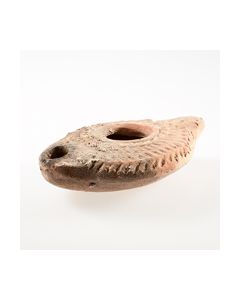 Öllampe in Form einer doppelten Lanzenspitze
Öllampe in Form einer doppelten LanzenspitzeSchulter mit Zweigen dekoriert. Der Zapfen ist in Form einer Lanzenspitze gestaltet. Überzug exzellent erhalten.
Price: on request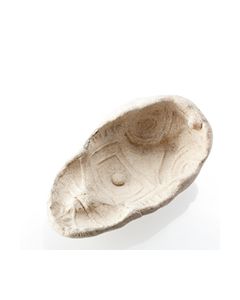 Maya-Kultur - Gussform für Fabelwesen
Maya-Kultur - Gussform für FabelwesenDie Form ergibt ein stilisiertes Tier oder ein Fabelwesen. Rückseite flach. Etwa 300 n. Chr. bis 900 n. Chr.
Price: on request Römisches Bleilot in Kegelform
Römisches Bleilot in KegelformMassives antikes Senkblei mit Öse zur Aufhängung. Seltenes Zeugnis römischer Handwerkskunst, 1. bis 4. Jh. n. Chr.
Price: on request Abdruckform zur Fertigung von Öllampen - Unterseite - selten
Abdruckform zur Fertigung von Öllampen - Unterseite - seltenZur Fertigung frühchristlicher nordafrikanischer Öllampen aus rotem Ton. Museumswürdiges Stück, perfekt erhalten.
Price: on request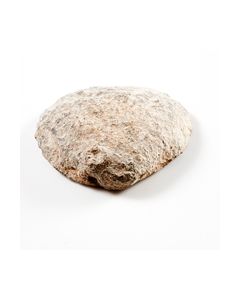 Gewicht in Muschelform
Gewicht in Muschelform20,7g, 2 2/3 phönizische Schekel. Fund aus Israel. Blei in Herzmuschelform gegossen. Seltenes Belegstück für muschelförmige Gewichte aus dem 4. bis 2. Jh. v. Chr.
Price: on request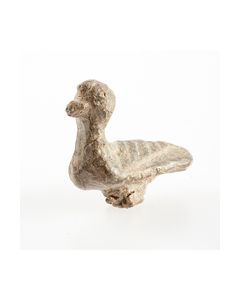 Römische Bleiapplike in Vogelform
Römische Bleiapplike in VogelformFür die Materialart großes Detailreichtum und exzellente Erhaltung. Länge: 26 mm. Selten.
Price: on request Abdruckform zur Fertigung von Öllampen - Unterseite - selten
Abdruckform zur Fertigung von Öllampen - Unterseite - seltenZur Fertigung frühchristlicher nordafrikanischer Öllampen aus rotem Ton. Museumswürdiges Stück, perfekt erhalten.
Price: on request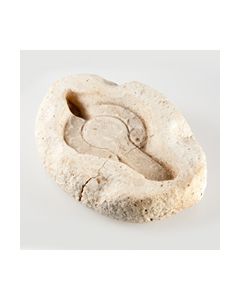 Abdruckform zur Fertigung von Öllampen - Oberseite - selten
Abdruckform zur Fertigung von Öllampen - Oberseite - seltenZur Fertigung frühchristlicher nordafrikanischer Öllampen aus rotem Ton. Im Spiegel Tiermotiv. Museumswürdiges Stück.
Price: on request

